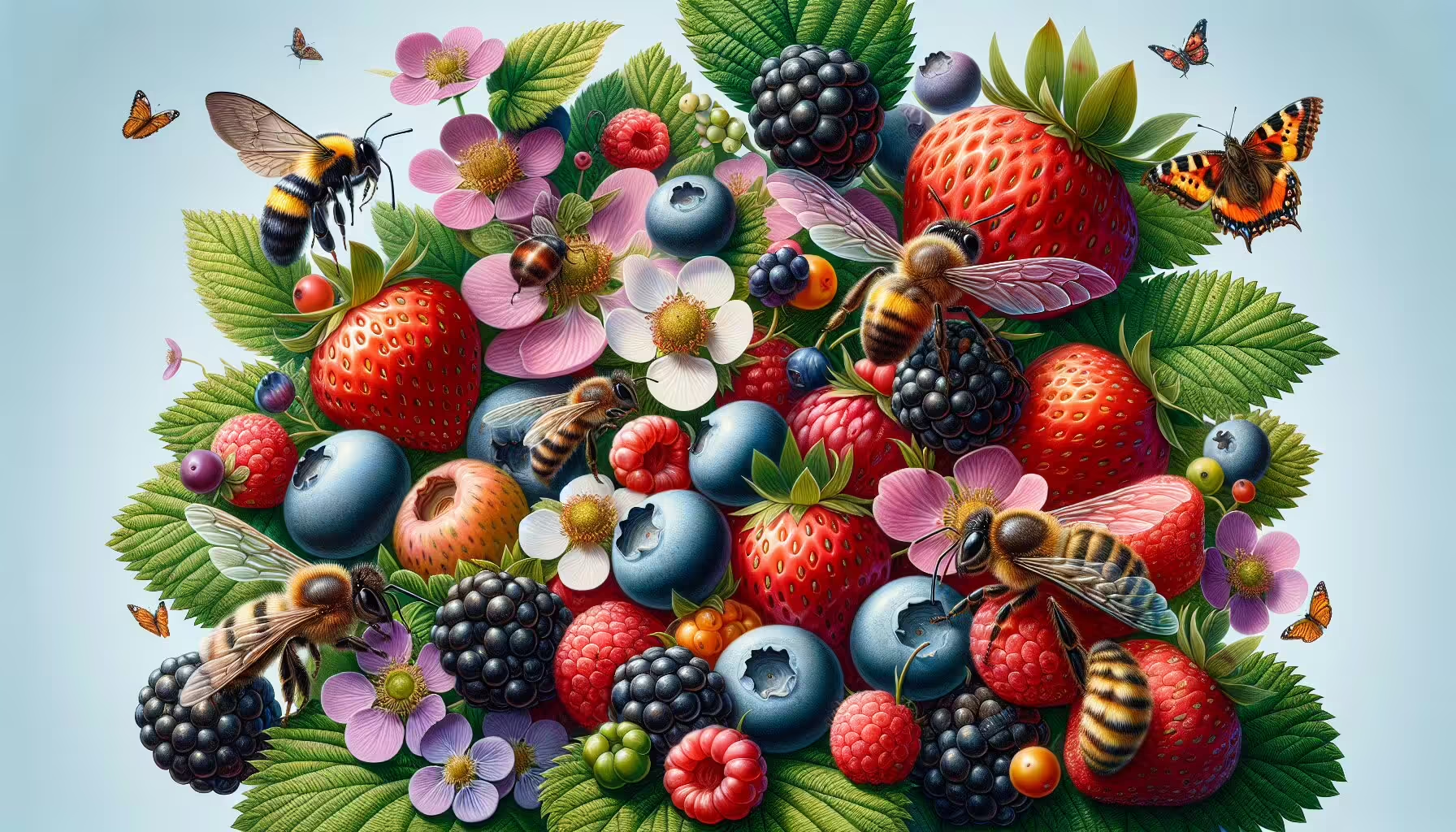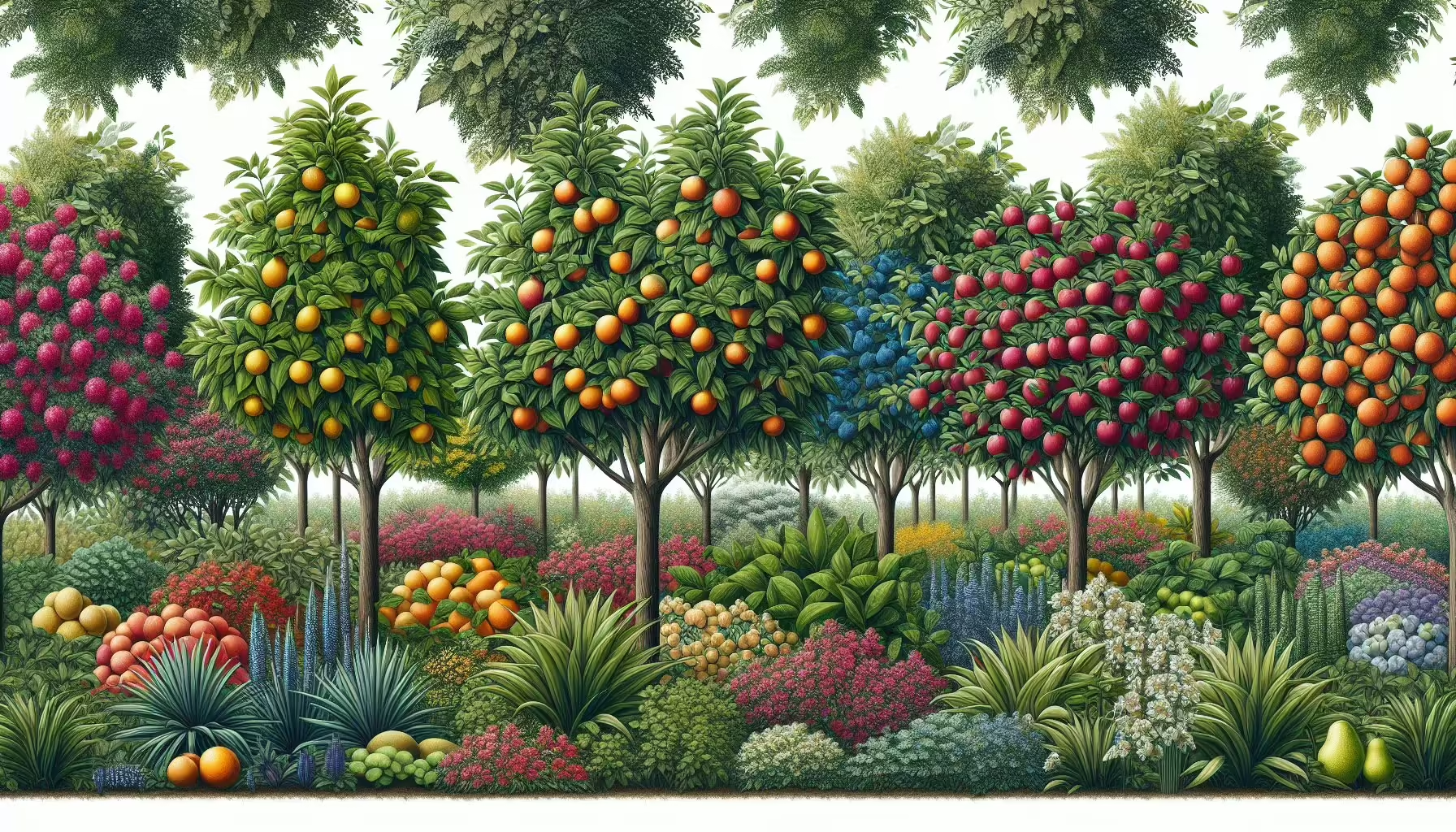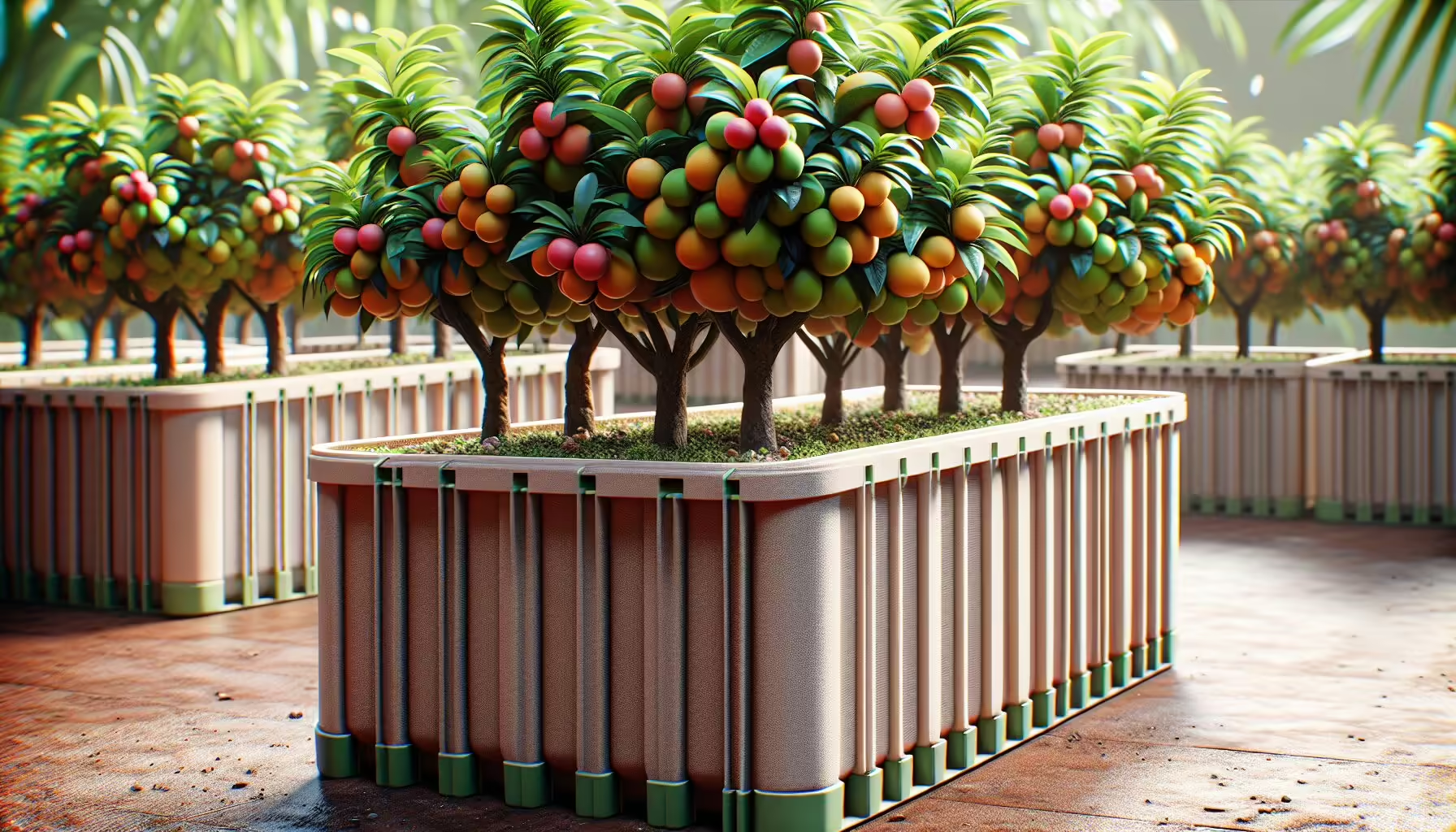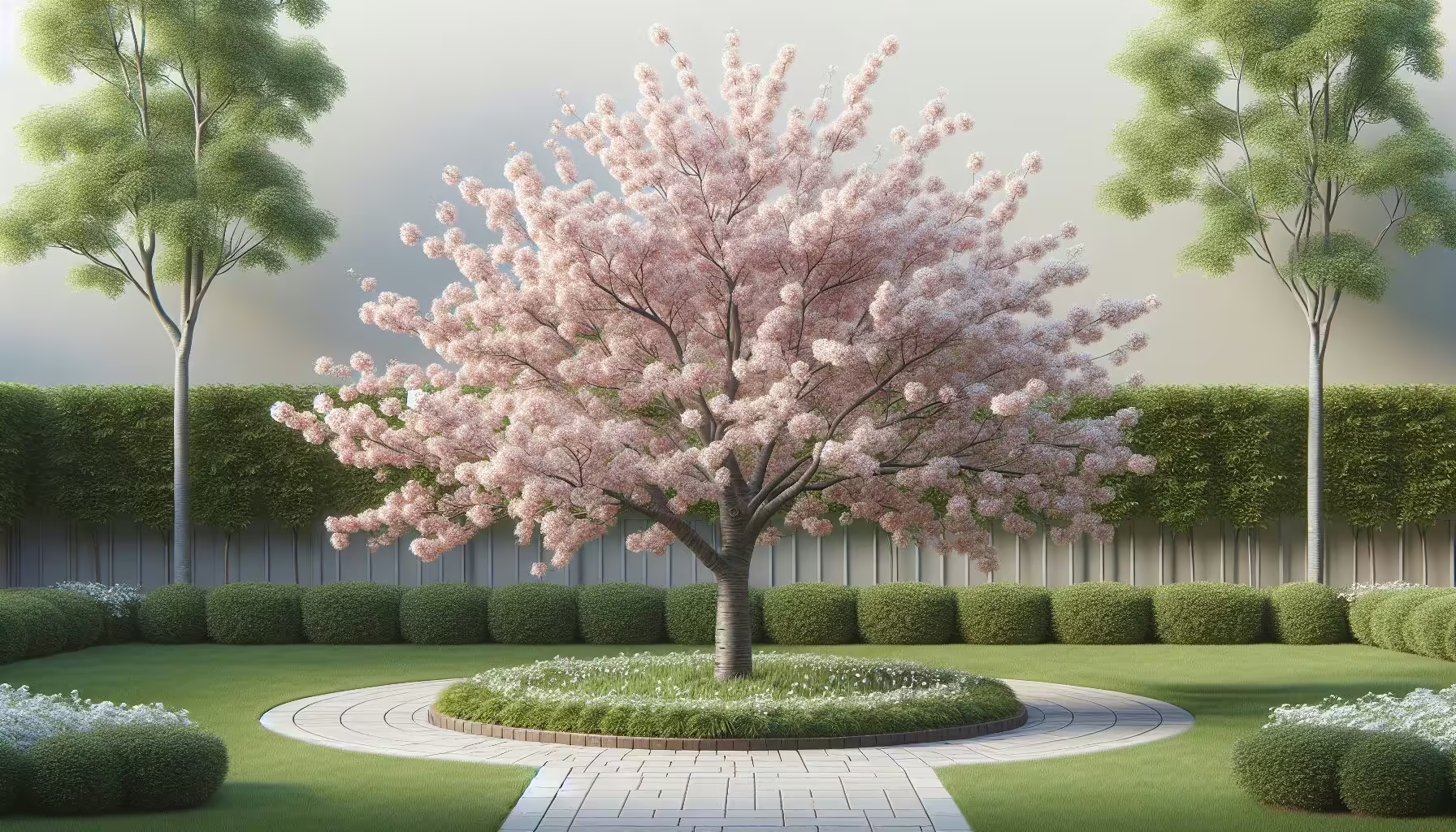Enchanting Berries: Nourishing Pollinators and Humans Alike
My Passion for Pollinator Gardens
Why Pollinator Gardens Matter to Me
I’ve always had a soft spot for nature’s wonders, and starting a pollinator garden has been like discovering a secret passage to happiness. These gardens are not just pretty—they’re lifesavers for bees and butterflies, those little guys who keep our world ticking. But for me, it’s more than that. My pollinator garden is a personal oasis, a spot where I can soak in the magic of the natural world.
Getting up close and personal with my garden’s buzzing and fluttering residents is incredibly calming. There’s something truly joyful about watching bees buzz from one bloom to the next or catching sight of a vibrant butterfly dancing in the air. Tinkering with which plants work best has not only taught me new skills; it’s deepened my love for making spaces that both I and these critters can enjoy.
Berries: The Garden’s Hidden Gems
In my little slice of green paradise, berries aren’t just a treat—they’re the bait and the bounty. They pull in pollinators like a kid to candy and are a snack for both me and the visitors. Check out the table below to see some of my favorite berries that double as pollinator magnets:
| Berry Type | Attracts | Nutritional Benefits |
|---|---|---|
| Blueberries | Bees | Packed with those good-for-you antioxidants and vitamins C and K |
| Blackberries | Butterflies | A sweet source of fiber and vitamin C |
| Raspberries | Bees, Butterflies | Loaded with vitamins A and C, plus fiber |
Mixing up a batch of berry plants means my garden’s not just a wildlife hangout—it’s also a feast for the eyes and taste buds. Picking my own fresh berries adds some zing to my meals and brings home that warm fuzzy feeling of being part of nature. If you’re curious about turning your own patch into a harvest haven, don’t miss our tips on starting an edible pollinator garden.
With berries in the mix, my pollinator garden has turned into a buzzing, blooming success. It feeds me in more ways than one, and my love for these gardens just keeps growing, dancing alongside the natural rhythm of life around me.
Understanding Pollinators
Making a garden that welcomes pollinators has been eye-opening for me, teaching me just how important these little guys are to our bigger outdoor picture. Bees and butterflies take the spotlight, each having its own starring role in keeping our plants buzzing and blooming.
The Role of Bees in Pollination
Bees are like the rock stars of pollination. Flitting from flower to flower for a sweet nectar snack, they accidentally trade pollen like baseball cards, helping plants get on with reproducing. This routine is a big deal for not just plant health but also for the fruits, like tasty berries, which cater to both critters and us humans.
| Bee Species | Pollination Efficiency (%) |
|---|---|
| Honeybee | 90 |
| Bumblebee | 80 |
| Mason Bee | 70 |
Each buzzy type of bee comes with its own set of skills. The honeybee, for instance, dazzles us with a 90% success rate in pollination gigs. By laying out a welcoming mat of bee-friendly blooms, I get to boost their numbers, which in turn keeps my beloved berry patch happy and healthy.
The Significance of Butterflies in Pollination
Though bees bask in the limelight, butterflies bring their own flair to the pollination scene. These graceful gliders are drawn to flowers that are bright and juicy with nectar, turning them into vital buddies for plenty of plant species. Their fluttery dance and specific flower picks help ensure a mix of plants gets its fair share of pollen.
| Butterfly Species | Preferred Flowers |
|---|---|
| Monarch | Milkweed, Asters |
| Swallowtail | Dill, Fennel |
| Painted Lady | Thistles, Violets |
While butterflies aren’t as hardcore as bees in moving pollen around, they’re no slouches either. I find real joy in crafting a garden party for both bees and butterflies, making the whole bloom fest sparkle.
Getting a handle on what these incredible pollinators do lets me keep my backyard paradise thriving, while also lending a hand to the local wildlife. If you’re itching to start your own pollinator wonderland, check out how to start an edible pollinator garden for some handy tips and tricks.
Berries that Attract Pollinators
Building a buzzing pollinator garden has been quite the adventure for me. Amongst the many plants vying for the attention of these tiny helpers, berries have certainly won my heart. They’re not just eye-candy; they’re a boon for us and our little insect buddies. Let me share with you three berry types that make pollinators sing: blueberries, blackberries, and raspberries.
Blueberries
Blueberries (Vaccinium spp.) are a superstar in the garden. They bloom during the spring, showing off lovely white to pink flowers that bees and their buzzing friends adore. And once the pollinators have had their fill, they leave us with nutrient-packed goodies.
| Attribute | Blueberries |
|---|---|
| Bloom Time | Spring |
| Nutritional Value (per 100g) | 57 calories, 0.7g protein, 0.3g fat, 14.5g carbs |
| Pollinator Charm | Off the charts! |
Adding blueberries to my garden is like hitting the jackpot – it’s a treat for the pollinators and me, keeping my taste buds happy all summer long.
Blackberries
Blackberries (Rubus fruticosus) are a no-brainer for a pollinator-friendly paradise. Those thorny bushes burst into white to pink flowers, calling out to bees, butterflies, and even hummingbirds. Plus, they’re a powerhouse of nutrition.
| Attribute | Blackberries |
|---|---|
| Bloom Time | Late spring to early summer |
| Nutritional Value (per 100g) | 43 calories, 1.4g protein, 0.5g fat, 9.6g carbs |
| Pollinator Charm | Unmatched |
Growing blackberries is a win-win; there’s nothing like biting into those sweet, juicy berries while contributing to a thriving ecosystem right at home.
Raspberries
Raspberries (Rubus idaeus) are the crown jewel of any garden, thanks to their enticing color and taste. When their flowers make an entrance in late spring and early summer, the pollinators come running. They’re not just tasty—they’re packed with fiber and vitamins, keeping my family and I super-healthy.
| Attribute | Raspberries |
|---|---|
| Bloom Time | Late spring to early summer |
| Nutritional Value (per 100g) | 52 calories, 1.2g protein, 0.7g fat, 11.9g carbs |
| Pollinator Charm | Top-notch |
By planting these berries, I’ve created a buzzing hub for pollinators and garnished my table with delightful treats.
These berries create a nifty partnership between folks like us and the busy pollinators, making them a must-have for a flourishing garden. If you’re itching to kickstart your own berry-filled oasis, check out my guide on how to start an edible pollinator garden.
Benefits of Berries for Humans
Berries aren’t just pretty plants in the backyard; they’re tiny powerhouses packing big benefits for your body and cooking adventures. Let’s be honest, I can’t get enough of these tasty little bombs—they make grub tastier and do wonders for my health.
Nutritional Value of Berries
Berries are loaded with goodies—think vitamins, minerals, antioxidants—without packing on the pounds. Yep, they’re low in calories and have a bunch of fiber, meaning they’re made for anyone who wants to keep feeling fit. Check it out, here’s some info on a few popular berries:
| Berry Type | Calories (per 100g) | Fiber (g) | Vitamin C (mg) | Antioxidants |
|---|---|---|---|---|
| Blueberries | 57 | 2.4 | 9.7 | High |
| Blackberries | 43 | 5.3 | 21.0 | High |
| Raspberries | 52 | 6.5 | 26.2 | High |
These little guys are antioxidant alchemists, helping me fight off stress in my bod. Adding them to my meals is like giving my immune system a pep talk, plus they jazz up my food with their bold colors and natural sweetness—who could say no?
Culinary Uses of Berries
When it comes to the kitchen, berries are the MVPs of versatility. I’m always whipping up different treats and meals with them. Here’s how I like to play around with berries:
- Smoothies: Toss them in for sweetness and a pop of flavor that’ll wake up your morning.
- Salads: Mix them in for a yummy clash of taste and texture.
- Desserts: Pop ’em in pies or tarts for that sweet, eye-catching finish.
- Jams and Jellies: Homemade berry jam is my jam really—nothing’s better on toast.
Whether I’m munching on them raw or after cooking, they never let me down. Want to try growing your own? Check out how to start an edible pollinator garden—it’s not just about feeding me but keeping those buzzin’ bees in my garden happy too. 🐝
How to Create a Pollinator-Friendly Garden
Creating a pollinator-friendly garden is like sharing a potluck with nature’s busy workers. It’s not just about putting food on the table for local critters; it’s about enjoying mouthwatering berries with my loved ones. So, let me tell you how I pick the best berry plants to pull in the pollinators and how I set up a cozy spot for these vital visitors.
Choosing Berry Plants
Picking berry plants is like choosing toppings for a sundae – you want some that bloom at different times to keep buffet open all season long. That’s how you keep those bees and butterflies fluttering about your garden! Here’s my go-to list of berry plants:
| Berry Type | Blooming Season | Pollinators Attracted |
|---|---|---|
| Blueberries | Spring | Bees, Butterflies |
| Blackberries | Late Spring-Early Summer | Bees |
| Raspberries | Summer | Bees, Butterflies |
These berries not only have pollinators buzzing but also provide scrumptious snacks. I find mixing up these plants makes my garden an all-you-can-eat buffet for everyone. If you’re curious about getting started, check out articles like how to start an edible pollinator garden – they’re a great starting point for ideas and tips.
Providing a Suitable Habitat for Pollinators
Making pollinators feel at home is just as crucial as the plants themselves. Here are a few tatics I swear by to make a pollinator paradise:
-
Mix It Up: Throw in a variety of blooms – not just berries. Native plants are the MVPs since they’re old pals with local pollinators.
-
Get Cozy: Set up little nooks like bee hotels or leafy hangouts where insects can chill and call home.
-
H2O Break: A little water feature or shallow dishes can double as a hydration station for your buzzing buddies and other wildlife.
-
Ditch the Sprays: Cutting down on pesticides is a win-win – a safer place for pollinators means more fruits for us!
For more handy hacks on giving pollinators a top-notch habitat, dig into creating habitat for pollinators in edible gardens.
With the right berry lineup and a haven for your pollinator friends, you’ll have a garden welcoming not just toothsome berries but a happy buzz of vital visitors. Trust me, your taste buds and the bees will thank you!
Sustaining the Ecosystem
The Buzz About Pollinators and Me
As a gardener, I’ve got a bit of a front-row seat to the fascinating world of pollinators and their connection to us humans. Imagine bees and butterflies acting as tiny farmers, buzzing around, doing their thing to help plants make fruits and seeds. And the end game? A cornucopia of delicious berries and more that feeds both them and us.
Every time I’m out in my garden, tending to my little slice of nature, I see the magic unfold. The buzzing and fluttering mean I’ve done something right. The garden becomes a bustling neighborhood for bees, butterflies, and all their pals. This team effort doesn’t just boost Mother Nature’s list of wonders; it also makes my garden pop with color and life. By making sure these critters have what they need—like grub and a cozy spot to hang out—I’m helping to keep the natural cycle in check and ensure we all have food on the table.
| Pollinator | Plant Perks | Human Benefits |
|---|---|---|
| Bees | Get flowers to do their fruit and seed thing | More fruit, like those yummy berries |
| Butterflies | Give love to many plants | Keep the plant kingdom diverse and tasty |
| Hummingbirds | Tube flower favorites | Help crank out fruit on special plants |
Keeping the Buzz Alive in My Garden
Caring for a pollinator paradise isn’t a one-and-done gig. Oh no, it’s an ongoing labor of love. I’ve picked up a few tricks along the way, like mixing it up with a bunch of different plants that blossom all year to keep the buffet open for my buzzing buddies.
A good mix includes berries, herbs, and flowers that roll out the welcome mat for more than just the usual suspects. This way, my garden stays rich and inviting, playing host to a variety of helpful guests. With all these visitors puzzled together, my garden’s health gets a solid boost.
I’m always on the lookout for tips and tricks on how to start an edible pollinator garden. Think planting strategies, getting the dirt right, keeping pests out—I’ve read ’em all. And seasonal planting charts? My garden’s secret weapon for staying lively from winter’s gloom to summer’s heat.
Building a haven for pollinators isn’t just about playing plant matchmaker—it’s about feeling that warm fuzzy connection with the wild world around us. Watching these little guys hustle in the garden serves as a gentle nudge that my efforts matter, and there’s a simple joy in nurturing nature’s delicate web.




Post Comment